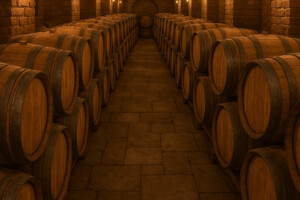
The environmental labelling obligation has been in effect for four months, and the law governing the display of nutritional information on wine bottles, according to EU Regulation 2021/2117, is set to take effect in less than eight months. The wine & spirits sector is in turmoil, but as a whole, it has already taken a direction: the digital one. The regulations leave the company’s choice of labelling methods to the company, but the paper label alone now appears insufficient to communicate all mandatory and optional information, as Conai, (Consorzio nazionale degli Imballaggi) the National Packaging Consortium, has been claiming for months.
Among the specialised companies, Giunko was the first to launch the Digital Environmental Label (Etichetta ambientale digitale, EAD), and it is still the only one capable of providing geolocalized environmental information, i.e. in accordance with each municipality’s separate waste collection rules. Depending on the needs, EAD is available from the barcode already present on the package, via dynamic QR Code, through a branded web app or within the company web page, thanks to the Iframe provided by Giunko. To date, Giunko’s digital environmental label can be found in various ways on over 1 million references, with nearly 2.5 million consumer views. “Unlike other solutions that have since been launched on the market”, says Noemi De Santis, Giunko manager, “EAD offers not only the guarantee of a specific know-how for the communication of geolocated disposal information but also a nearly sartorial customization”.
Once the most suitable technical solution has been chosen (barcode, QR Code, web app or Iframe), producers can provide each individual package with a virtual link to its product sheet. For each reference, environmental information that is automatically aligned with the rules of each municipality can be entered, as well as ingredients and nutritional information, sustainability content, additional details on the product and/or company, logo, contacts, and even external links.
So far, the wine and beverage industry has been one of the most receptive to the digital solution. EAD is used and promoted by UIV (Unione Italiana Vini) and Federvini and has been reported as a good practice by Conai. As Noemi De Santis explains: “with the minimum physical footprint, it is possible to obtain an almost infinite digital extension of the contents, which are also made available to consumers in eleven different languages. A significant advantage for products such as wines and spirits, which are frequently destined for distribution in foreign markets”.
Copyright © 2000/2025
Contatti: info@winenews.it
Seguici anche su Twitter: @WineNewsIt
Seguici anche su Facebook: @winenewsit
Questo articolo è tratto dall'archivio di WineNews - Tutti i diritti riservati - Copyright © 2000/2025